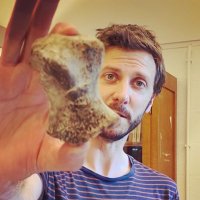
Dr Rebecca Bennion
@calymeneblue
Documentation Officer @MuseumFolly 🏛️
Outreach Coordinator @FossilsH 🐚
Palaeontologist @universiteliege 🐬
Heritage, collections & community engagement
ID: 583922853
18-05-2012 14:12:07
8,8K Tweet
1,1K Followers
1,1K Following








Watching the far right set fire to the newly reopened Spellow Hub library in Liverpool should be lesson enough on how much these thugs really care about “communities” and “young children.” Let none of these thugs pretend they are motivated by anything other than racism and hate.


The excavations of Victoria Cave in the 1870s were photographed by the Settle based Horner Photographic Studios. This photograph of the Victoria Cave bear fossils was digitised from an original glass plate negative in the Horner Collection at the Museum of North Craven Life at The Folly. #FossilFriday


The Yoredales Series of rocks is rich in brachiopods, bivalves and even trilobites! During last Friday's trip with The Yorkshire Fossil Hunter we found a number of disarticulated trilobite head shields and tails, likely to have been shed carapaces. #TrilobiteTuesday


New #OA paper out ! We examined the impact of glass surfaces (such as in the marine reptile gallery at the Natural History Museum) on the accuracy of 3D surface modelling. Turns out we can generate accurate models, see the paper for tests and protocols (1/2) palaeo-electronica.org/content/2024/5…

It has happened! Thank you so much to Dr Rebecca Bennion for including me on this. So happy you could take the work forward and make it awesome! Thank you to Prof. Valentin Fischer and dr. Jamie MacLaren for everything !palaeo-electronica.org/content/2024/5…











